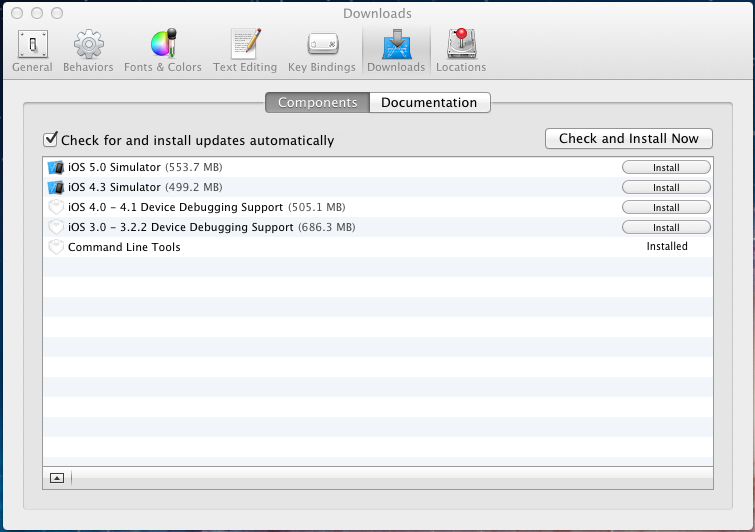Cmake Mac Cmake For Mac
# obtain the source code; e.g., from the command line using git: git clone # go to the OpenFAST directory cd OpenFAST # create a directory called `build` mkdir build # go to the build directory cd build # execute CMake with the default options, which will create a series of Makefiles cmake./ # execute a make command (with no target provided, equivalent to `make all` make This will build the OpenFAST suite in the build directory, which can be deleted for a clean build. There are many Makefile targets (besides all), which can be listed via help. Current CMake options Below is a list of current CMake options including their default settings (which will effect, e.g., the targets in a resulting Makefile. • BUILD_DOCUMENTATION - Build documentation (Default: OFF) • BUILD_FAST_CPP_API - Enable building OpenFAST - C++ API (Default: OFF) • BUILD_SHARED_LIBS - Enable building shared libraries (Default: OFF) • BUILD_TESTING - Build the testing tree (Default: OFF) • CMAKE_BUILD_TYPE - Choose the build type: Debug Release (Default: Release) • CMAKE_INSTALL_PREFIX - Install path prefix, prepended onto install directories. • DOUBLE_PRECISION - Treat REAL as double precision (Default: ON) • FPE_TRAP_ENABLED - Enable Floating Point Exception (FPE) trap in compiler options (Default: OFF) • ORCA_DLL_LOAD - Enable OrcaFlex library load (Default: OFF) • USE_DLL_INTERFACE - Enable runtime loading of dynamic libraries (Default: ON) CMake options can be configured through command line, e.g.  Parallel build GNU Make has a parellel build option with the -jobs or -j flag, and the OpenFAST CMake configuration handles setting up the dependencies for Make so the build can be parallelized. Adobe arabic font for mac. However, it is important to note that the only parallel portion of the build process is in compiling the modules.
Parallel build GNU Make has a parellel build option with the -jobs or -j flag, and the OpenFAST CMake configuration handles setting up the dependencies for Make so the build can be parallelized. Adobe arabic font for mac. However, it is important to note that the only parallel portion of the build process is in compiling the modules.
How To Install Cmake

Building OpenFAST with CMake on Linux and Mac¶ We describe here how to install OpenFAST (or any of its modules) using the CMake build system on Linux or Mac OS systems. Separate CMake documentation is provided for Windows Cygwin users: see Section 2.4. Typically this means selecting CMake as the Source directory and then selecting a binary directory for the resulting executables. Linux, Mac OS, UNIX There are pre-compiled binaries available on the Download page for some UNIX platforms.